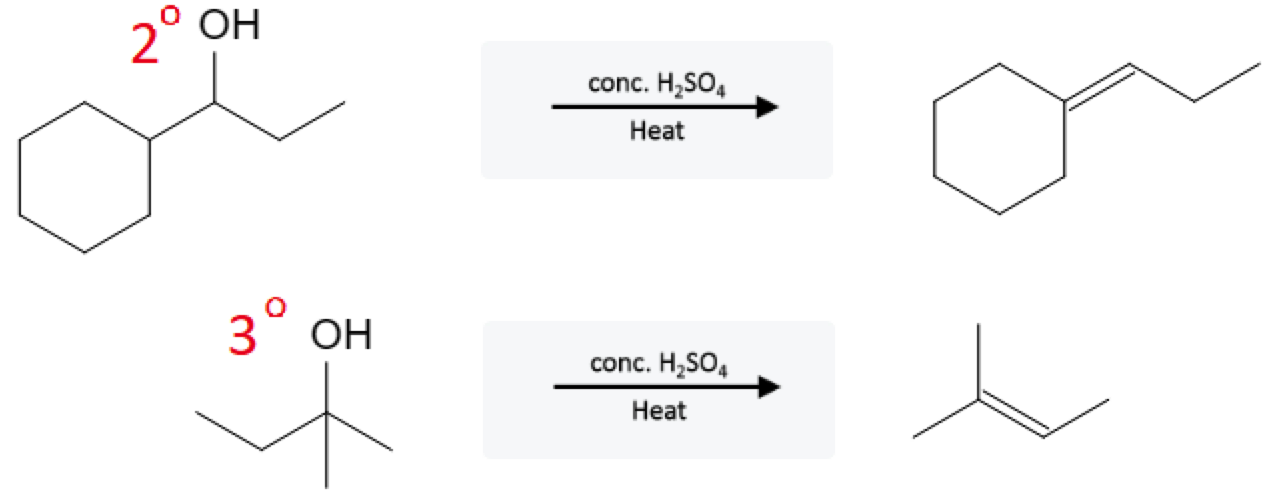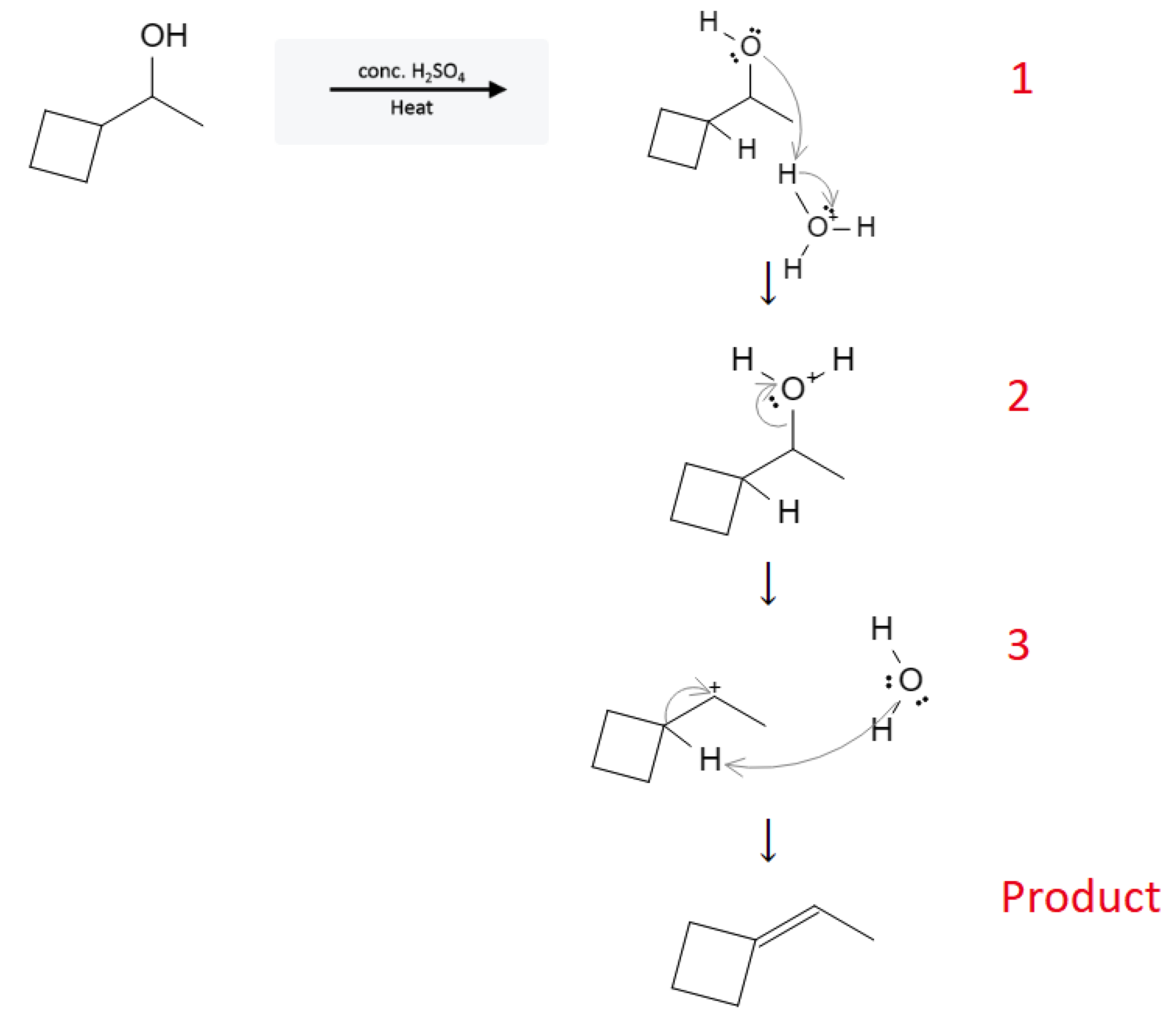Alcohol Reactions: Alcohol Elimination (E1) to form Alkenes
When alcohols are in a solution with acids (H2SO4, H3O+), an elimination reaction can occur:

The alkene bond forms between the carbon atom that was attached to the alcohol group and the most substituted adjacent carbon atom. This is known as the Zaitsev Rule and is similar in logic to Markovnikov’s Rule. While this reaction could occur with a primary alcohol, it is not very likely (low yield, if at all) and more correct to use this reagent with secondary and tertiary alcohols:
Secondary and Tertiary Alcohols:

The reaction mechanism is depicted below using H3O+ for simplicity however, H2SO4 would react the same way:

In the first step, lone pair electrons from the alcohol group attack the proton on the acid group (H3O+, H2SO4), resulting in the oxygen atom receiving those electrons.
In the second step, the now positively charged oxygen atom leaves the molecule as its own H2O molecule, leaving behind a carbocation.
In the third step, the water molecule (or HSO4-) returns to remove the proton attached to the adjacent carbon. This sends the free electrons from the hydrogen-carbon bond over to the carbocation, forming an alkene bond.
Practice this reaction using our Reaction Solver!